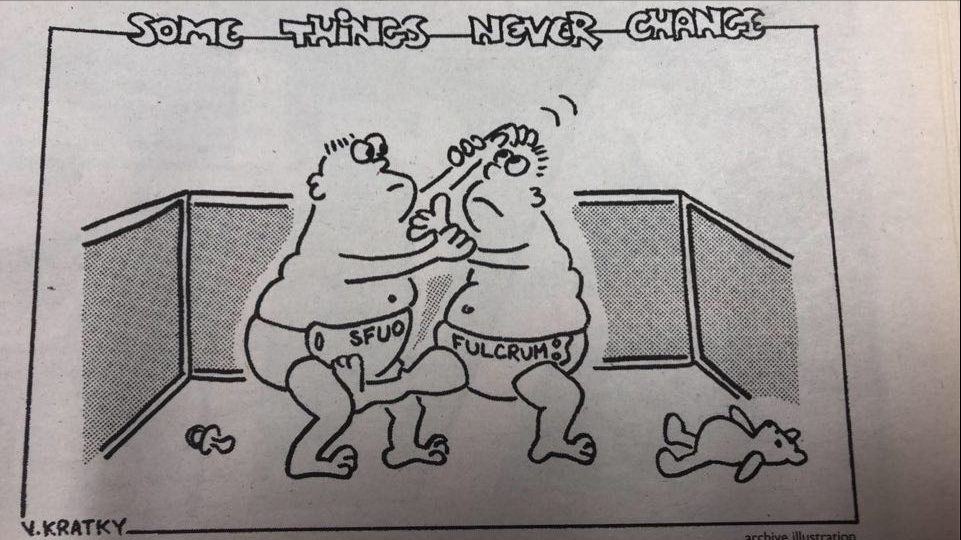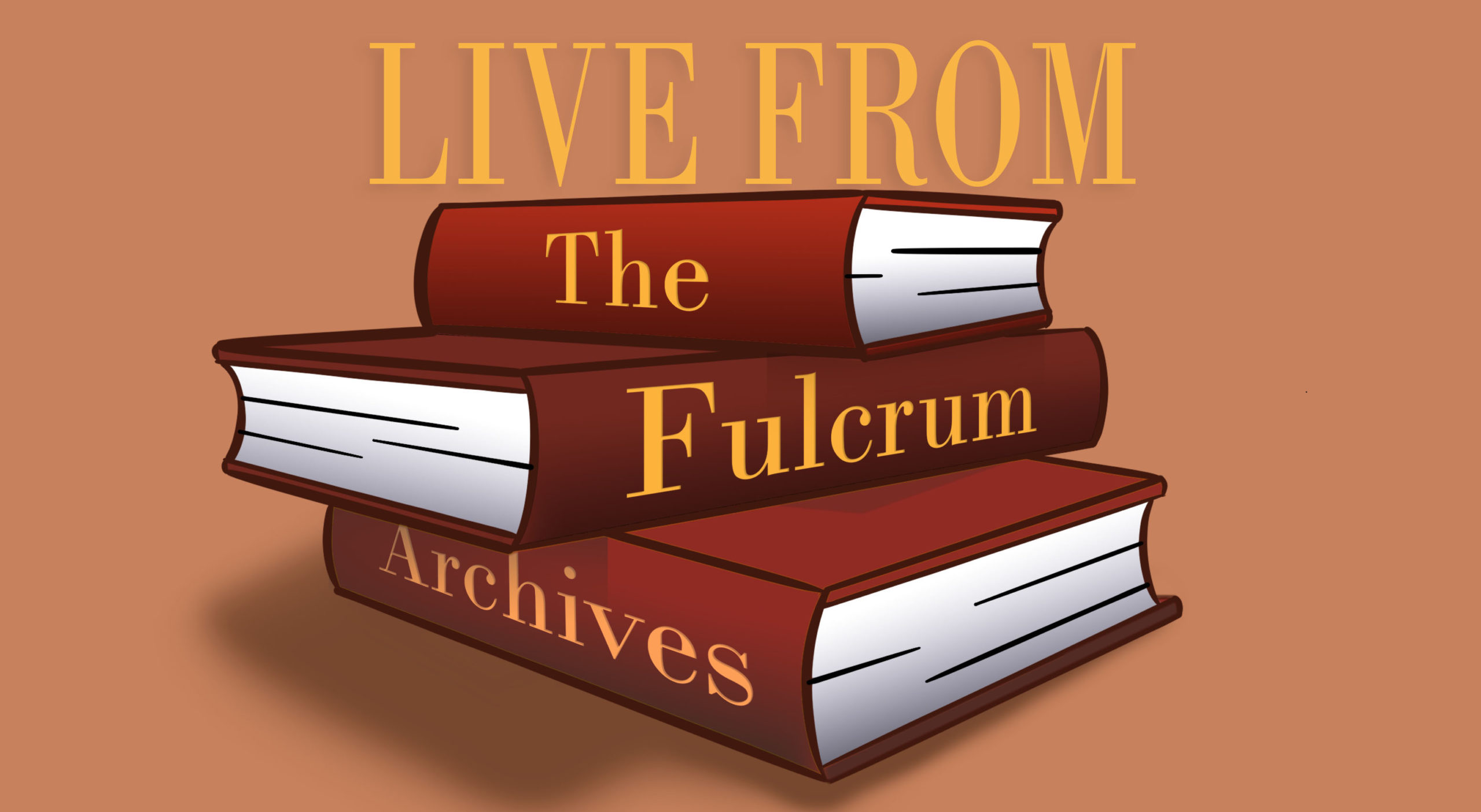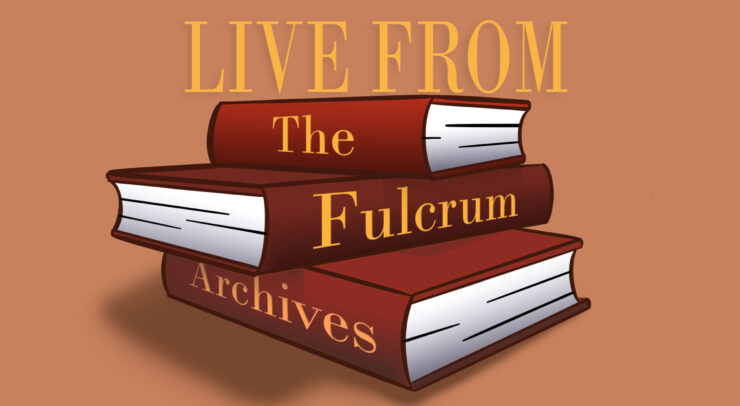The 2005-06 editorial board explains why the Fulcrum parted ways with the SFUO
Originally published on Sept. 22, 2005.
This isn’t the first time that the Fulcrum’s independence has been discussed in an editorial. Eight months ago, following a January decision by the Board of Administration (the University of Ottawa’s highest student-governing body), Marcus McCann explained and defended the Fulcrum’s desire to part ways with its long-time publisher, the Student Federation of the University of Ottawa (SFUO).
For the past three decades, both sides have pled the case for a separation of powers. As McCann explained in January, a conflict of interest was inherent in a printing relationship in which the publisher of the newspaper was often the target of editorial investigation and criticism. The situation was open to bullying and intimidation on the part of the SFUO, or to irresponsible (and, ultimately, expensive) behaviour on the part of the Fulcrum. The SFUO could pull the paper from the stands; the Fulcrum could be a sink-hole for student money.
Neither side ever (particularly) abused its privileges, though both came close. The balance between the two factions depended entirely on the students elected to the editorial board of the Fulcrum and elected to the executive of the SFUO. One power-hungry president or one hell-bent editor-in-chief could sour the relationship in a few short months.

The cartoon above is from 1981 and speaks both to the typical relationship between a student newspaper and a student union executive, and to the editor’s acceptance that the relationship would likely never change. The two fight, they disagree, they attack each other and defend their own interests, and that much will never change — it is the nature of the business. Previously, if that fight turned ugly, it had ramifications for the other side — a broken nose of a black eye perhaps, manifested in the red of budgets or the absence of newspapers.
The Fulcrum has always been student-owned; a portion of its revenue comes from the student levy ($5.28 each from full-time students, per year). The vp finance of the SFUO was previously required to work hand-in-hands with the editor-in-chief of the Fulcrum to create a balanced budget. If the Fulcrum lost money, the SFUO had to redirect funds from its profitable businesses to offset the Fulcrum’s losses. When the Fulcrum made a profit, the money was funnelled into a money-loser like the Nox.
With increased independence comes increased responsibility — for both sides. The SFUO’s previous fail-safe mechanism of stopping the presses if potentially damaging information surfaced in the Fulcrum no longer exists. Student representatives must be more responsible managing students’ money and safeguarding student interests. And the Fulcrum must hold them to it and report on their actions fairly and accurately — without fear of repercussions. The model benefits students in both cases.
In the present situation, the consequences of slip-ups are entirely the Fulcrum’s to deal with. If we are sued for libel, we are on the hook financially for the lawsuit. If we lose money in a given year, we cannot be bailed out by the SFUO.
The new political landscape also gives the average student the opportunity to be involved in the financial operations of the newspaper. Each year in March, the Fulcrum Publishing Society (the newspaper’s independent publishing board) holds an Annual General Meeting at which any shareholder — any student at the U of O — can run for a board position. The paper’s bylaws and constitution are approved at this meeting as well. Essentially, the middleman has been eliminated, and students have direct control of the Fulcrum.
But the gains are ours as well. We no longer fear an SFUO executive stifling freedom of the press, one that will pull the paper from the stands or demand the closing of its office. We have journalistic freedom, and can act fully within our mandate: to be a voice for the voiceless, to represent views and news that the students at the University of Ottawa have a right to hear.
Fun facts about this article
- The Fulcrum is still independent from the two student unions at the University of Ottawa.
- The Fulcrum was published by the SFUO from 1946 to 2005.
- A plaque in the Fulcrum’s offices recognizing the effort of 2004-05 editor-in-chief Mary Cummins reads as follows: “As a volunteer, editor-in-chief, president and board member, Mary Cummins has left an indelible history at the Fulcrum. Most importantly, it is thanks to her tireless work that the University of Ottawa now possesses a free and independent student press. We shall be forever grateful.”




